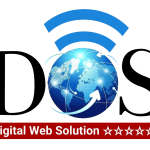
B2C Portal Development: A Guide to Building Customer-Centric Platforms
Discover the key aspects of B2C portal development, from user-friendly design to secure transactions. Learn how to create a scalable, engaging, and high-performing platform that enhances customer experience, boosts sales, and ensures seamless interactions between businesses and consumers.
Introduction
B2C (Business-to-Consumer) portals are essential for companies looking to engage directly with customers through online platforms. Whether for eCommerce, booking services, or digital marketplaces, a well-developed B2C portal enhances user experience, increases customer retention, and boosts sales.
Key Features of a B2C Portal
A successful B2C portal should include:
- User-Friendly Interface – Intuitive navigation and seamless browsing experience.
- Mobile Responsiveness – A portal that works efficiently on all devices.
- Personalized User Experience – AI-driven recommendations and user-specific content.
- Secure Payment Integration – Support for multiple payment methods like credit cards, PayPal, and digital wallets.
- Fast Performance – Optimized loading speed through caching, CDN, and lightweight code.
- Customer Support & Chatbots – 24/7 support through live chat, chatbots, and FAQs.
- SEO Optimization – Proper keyword usage, meta tags, and structured data for better search engine rankings.
Steps to Develop a B2C Portal
1. Define Business Goals and Target Audience
Understanding user behavior and expectations helps in designing a portal that aligns with business objectives.
2. Choose the Right Technology Stack
Depending on the scale and requirements, businesses can opt for:
- Front-end Technologies – React, Angular, Vue.js
- Back-end Development – Node.js, PHP, Python
- Databases – MySQL, MongoDB, PostgreSQL
- Cloud & Hosting – AWS, Google Cloud, Azure
3. Design a User-Centric UI/UX
The interface should be simple, attractive, and easy to navigate. Elements like clear CTAs, intuitive search filters, and quick access to customer support improve user engagement.
4. Develop and Integrate Key Features
Building a scalable and functional B2C portal involves integrating features like product catalogs, shopping carts, wish lists, and secure login systems.
5. Implement Security Measures
Security is crucial to protect user data. Implementing SSL certificates, two-factor authentication, and data encryption helps in securing transactions and user credentials.
6. Optimize for Performance and SEO
Fast-loading pages, optimized images, and structured URLs improve both user experience and search engine visibility.
7. Test and Launch
Before going live, rigorous testing ensures the platform is free of bugs and glitches. Performance testing, usability testing, and security checks should be conducted before the final launch.
Best Practices for B2C Portal Success
- Keep the UI simple and clutter-free.
- Ensure the checkout process is seamless with minimal steps.
- Use data analytics to track customer behavior and improve user experience.
- Regularly update security patches and software.
- Provide multiple customer support options like live chat, emails, and FAQs.
Purva Kumari
Leave a comment
Your email address will not be published. Required fields are marked *


